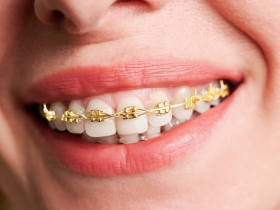Parkinson’s disease is a debilitating condition that severely impacts your quality of life by limiting mobility and affecting your motor skills. This neurodegenerative disease progresses over time, but that progression can vary widely between each person.
How can someone tell when their Parkinson’s disease is getting worse? Read on to learn more about the stages of Parkinson’s disease.
The 5 Stages of Parkinson’s Disease
Parkinson’s disease occurs in five stages, with each one progressing slightly in severity of symptoms. The stages are categorized as follows:
Stage 1
During the first stage of Parkinson’s, you will experience mild symptoms that do not interfere with most daily activities. This includes slight tremors or movements. You may also notice changes in your posture or facial expressions. Some people have difficulty walking at this stage.
Stage 2
In the second stage of Parkinson’s disease, symptoms will gradually worsen. There will be more significant tremors, difficulty walking, and poor posture. Your ability to complete daily activities may become more difficult because of movement issues and poor motor function.
Stage 3
Stage 3 is considered to be the middle stage of Parkinson’s disease and is categorized by more severe symptoms than the previous ones. It tends to involve loss of balance, falling down, and significant motor difficulties. These symptoms will begin to impact your quality of life and your ability to perform daily tasks.
Stage 4
By the fourth stage of Parkinson’s disease, your symptoms have fully developed. At this point, they severely impact your ability to perform daily tasks. You may not be able to walk without assistance and may rely on mobility aids. Many enlist the help of a caretaker at this stage of their Parkinson’s battle.
Stage 5
Stage 5 is the most debilitating. At this time, you may experience stiffness in your legs that makes it impossible to walk or stand on your own. Parkinson’s patients are often bedridden or confined to wheelchair use at this point.
The Progression of Parkinson’s Disease
The progression of Parkinson’s disease can also be categorized into three clinical phases. These are explained below:
Preclinical Phase
The preclinical phase of Parkinson’s disease means that no clinical symptoms are evident yet. At this time, the degeneration of dopamine-producing neurons has just started.
Prodromal Phase
During the Prodromal Phase, Parkinson’s symptoms become present. However, they may be too mild to make an official diagnosis.
Clinical Phase
By the Clinical Phase of Parkinson’s disease, symptoms are evident and continuously progressing. This is when most patients receive a diagnosis and begin a treatment regimen.
Treating Parkinson’s Disease
There is no cure for Parkinson’s disease, but symptoms can be managed — and its progression slowed — with certain treatments. Regenerative medicine, also known as stem cell therapy, is growing in popularity due to its potential utilizing mesenchymal stem cells.
If you have recently been diagnosed with Parkinson’s or suspect progression of your condition, regenerative medicine may be a maintenance solution to discuss with your medical team.
This post was written by a medical professional at Stemedix Inc. At Stemedix we provide access to Regenerative Medicine for hair, also Stem cell treatment for Parkinson’s. Regenerative medicine has the natural potential to help improve symptoms sometimes lost from the progression of many conditions.












